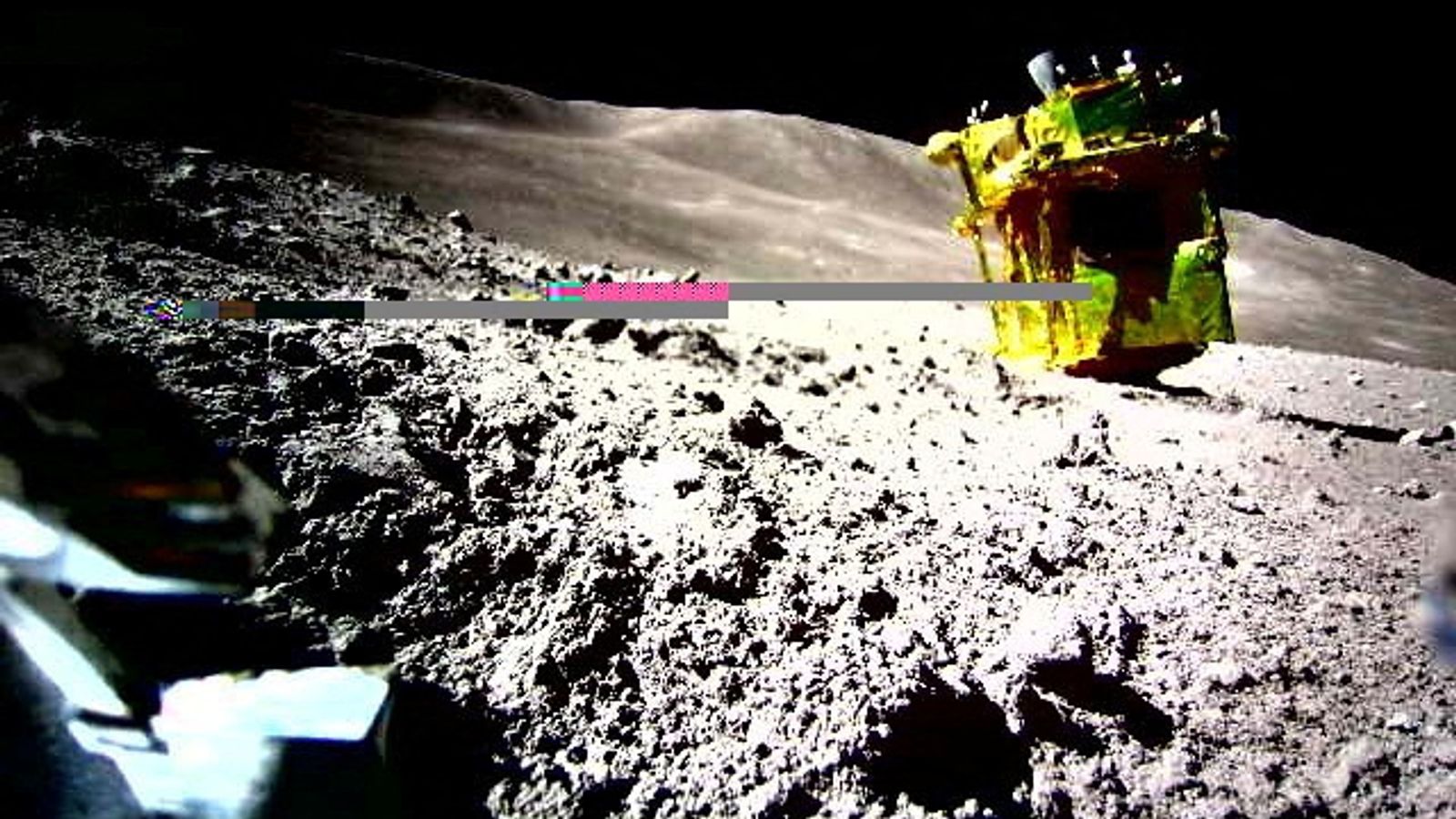Japan’s SLIM spacecraft has regained power more than a week after it ran out of electricity after landing on the moon.
The Japan Aerospace Exploration Agency (JAXA) said it re-established communication with its lander late on Sunday, nine days after Japan became the fifth country to put a spacecraft on the moon.
The Smart Lander for Investigating Moon (SLIM) touched down on the moon within 55m (180ft) of its target on 20 January, but a likely failure with one of the probe’s two main thrusters meant it landed on its head rather than its feet.
As battery power rapidly drained, mission managers were forced to put the lander into hibernation after just three hours.
But thanks to a change in the sunlight’s direction, the probe’s solar panels have been able to generate power.
Read more:
Mars helicopter’s historic mission finally over
New type of star – nicknamed ‘old smokers’
Scientists discover dozens of possible planets
Be the first to get Breaking News
Install the Sky News app for free
JAXA said the lander has resumed its operations to analyse the composition of olivine rocks on the lunar surface, in search of clues about the origin of the moon.
The agency said it does not have a clear date when SLIM will end its operation, but previously said the lander was not designed to survive a lunar night – the next is on Thursday.
The mission has already been hailed a success, having achieved the primary objective of landing within a 100m diameter target zone – a technology that could prove to be a powerful tool for future exploration of possible sources of fuel, water and oxygen.







